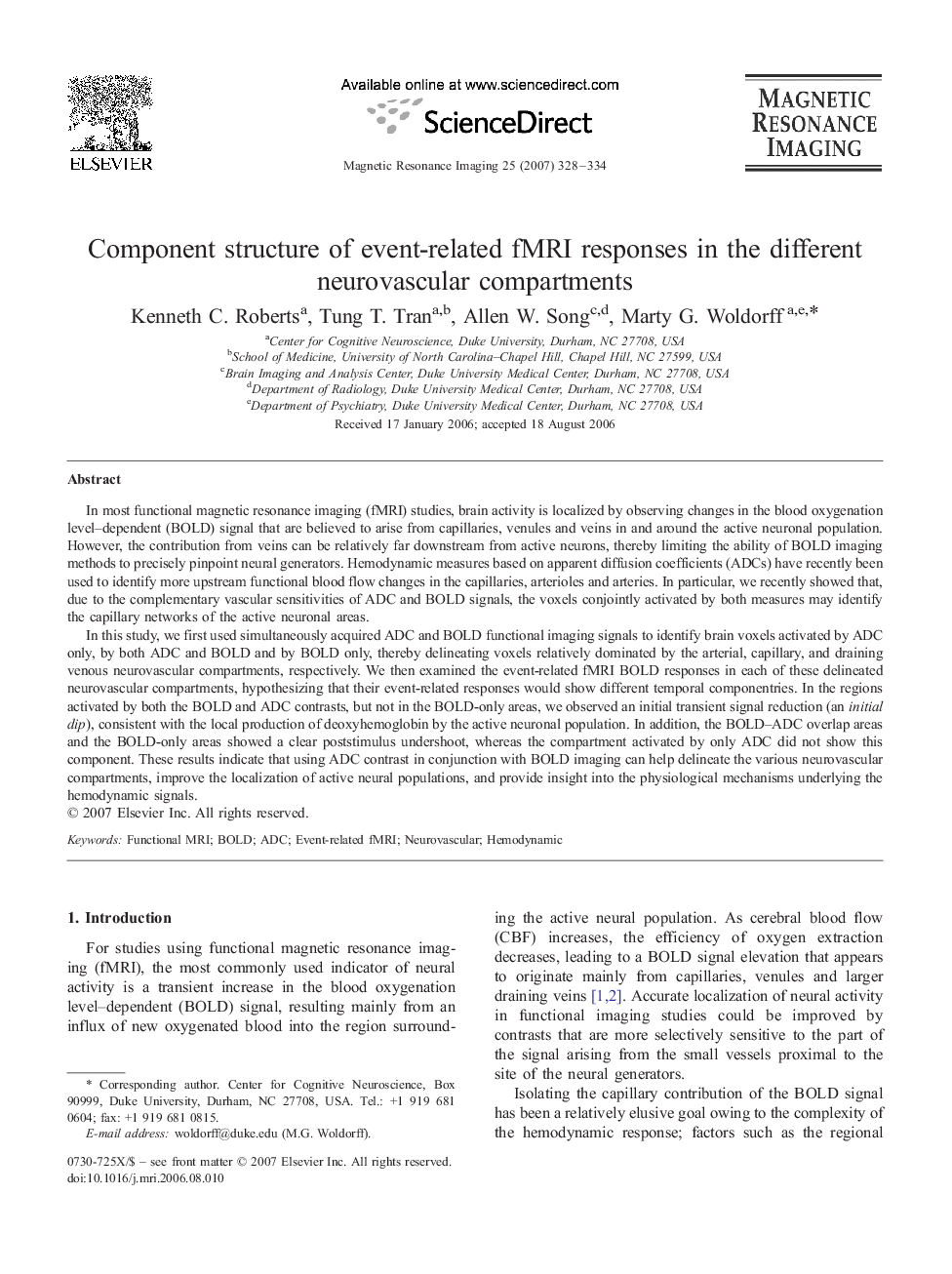| کد مقاله | کد نشریه | سال انتشار | مقاله انگلیسی | نسخه تمام متن |
|---|---|---|---|---|
| 1807902 | 1025292 | 2007 | 7 صفحه PDF | دانلود رایگان |

In most functional magnetic resonance imaging (fMRI) studies, brain activity is localized by observing changes in the blood oxygenation level–dependent (BOLD) signal that are believed to arise from capillaries, venules and veins in and around the active neuronal population. However, the contribution from veins can be relatively far downstream from active neurons, thereby limiting the ability of BOLD imaging methods to precisely pinpoint neural generators. Hemodynamic measures based on apparent diffusion coefficients (ADCs) have recently been used to identify more upstream functional blood flow changes in the capillaries, arterioles and arteries. In particular, we recently showed that, due to the complementary vascular sensitivities of ADC and BOLD signals, the voxels conjointly activated by both measures may identify the capillary networks of the active neuronal areas.In this study, we first used simultaneously acquired ADC and BOLD functional imaging signals to identify brain voxels activated by ADC only, by both ADC and BOLD and by BOLD only, thereby delineating voxels relatively dominated by the arterial, capillary, and draining venous neurovascular compartments, respectively. We then examined the event-related fMRI BOLD responses in each of these delineated neurovascular compartments, hypothesizing that their event-related responses would show different temporal componentries. In the regions activated by both the BOLD and ADC contrasts, but not in the BOLD-only areas, we observed an initial transient signal reduction (an initial dip), consistent with the local production of deoxyhemoglobin by the active neuronal population. In addition, the BOLD–ADC overlap areas and the BOLD-only areas showed a clear poststimulus undershoot, whereas the compartment activated by only ADC did not show this component. These results indicate that using ADC contrast in conjunction with BOLD imaging can help delineate the various neurovascular compartments, improve the localization of active neural populations, and provide insight into the physiological mechanisms underlying the hemodynamic signals.
Journal: Magnetic Resonance Imaging - Volume 25, Issue 3, April 2007, Pages 328–334